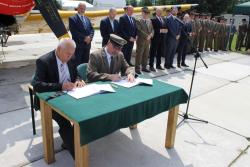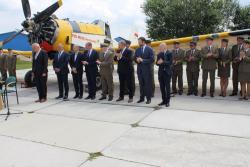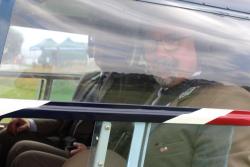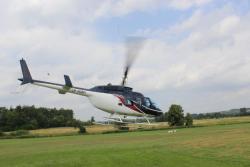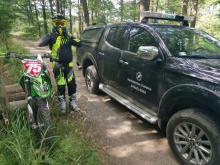 Asset Publisher
Asset Publisher
Polish forests
Poland is in the European lead, while concerning the area of all forests. They cover about 29,2 % of the country territory, and grow within the area of 9,1 million hectares. The overwhelming majority of the forests is state owned, of which almost 7,6 million hectares are managed by the State Forests National Forest Holding..
The number of Polish forest is still growing. The forestation rate of the country has increased from 21 % in 1945 to 29,2 % at the moment. Between 1995 and 2008, the forest area increased by 310 thousand ha. The basis for afforestation works is the "National Programme for Increasing the Forest Cover" (KPZL), assuming an increase of the forestation rate up to 30 % by 2020 and up to 33 % by 2050. Polish forests abound in flora, fauna and fungi. 65 % of the total number of animal species live there.
The forests grow in our country on poor soils, mainly because of the development of the agriculture in previous years. It influences the distribution of the types of the forest sites in Poland. Over 55 % of the forest areas is covered with coniferous forests. In other areas, there are forest sites, mainly the mixed ones. Their small part constitute alder and riparian forests – not more than 3 %.
In the years 1945 – 2011 the area of natural deciduous tree stands within the area of the State Forests National Forest Holding increased from 13 to 28,2 %.
Within the lowlands and uplands the most often occurring tee species is pine. It covers 64,3 % of the forest area of the State Forests National Forest Holding and 57,7 % of private and commune forests. In the mountains the predominant species is European spruce ( in the west) and European spruce with beech (in the east). Domination of pine is the result of carrying on sustainable forest management in the past. Once, the monocultures (crops or cultivations of one species) were the answer to the great demand of industry for wood. Such forests appeared to be quite fragile to climatic factors. They also were often the prey of pests' expansion.
In Polish forests, the share of other tree species, especially deciduous trees have been systematically increasing. The foresters have stepped aside from monocultures – that is why, they try to fit specific species of the forest stand to the natural stand, that would be proper for the given area. Thanks to that, in the years 1945 – 2011, the area of the deciduous tree stands within the lands of the State Forests National Forest Holding increased from 13 to 28,2 %. There occur more and more frequently the following tree species: oaks, ashes, maples, sycamore maples, elms, but also birches, beeches, alders, poplars, hornbeams, aspens, tilias and willows.
Our forests are the most often represented by the forest stands aged 40 to 80 years. The average age of the forest equals 60 years. More and more trees are of big size at the age over 80 years. Since the end of the Second World War, the forests' area has increased up to almost 1,85 million hectares.
Raport o stanie lasów w Polsce 2012
 Asset Publisher
Asset Publisher
Niemal pół miliona złotych dotacji na ochronę lasów
Niemal pół miliona złotych dotacji na ochronę lasów
Lasy którymi opiekują się m.in. leśnicy z Regionalnej Dyrekcji Lasów Państwowych w Katowicach będą bardziej bezpieczne. Dzięki współpracy z Wojewódzkimi Funduszami Ochrony Środowiska i Gospodarki Wodnej z Krakowa, Katowic, Opola i Wrocławia Lasy Państwowe 13 lipca otrzymały blisko pół miliona złotych na dofinansowanie lotów patrolowo-gaśniczych.
Dotacje pozyskane z WFOŚIGW w Katowicach na przestrzeni lat 2009-2012 i 2016-2021 na to zadanie, to łącznie niemal 3,7 mln zł. Tylko 13 lipca tego roku dyrektor Damian Sieber i Tomasz Bednarek, Prezes Zarządu WFOŚiGW w Katowicach podpisali umowę na dofinansowanie w kwocie 300 tys. zł.
Z kolei dotacje pozyskane z WFOŚIGW w Opolu wciągu ostatnich dwóch lat na zadanie związane z ochroną przeciwpożarową lasów wyniosły 120 tys. zł. Tylko w tym roku otrzymaliśmy dofinansowanie w wysokości 70 tys. zł, które potwierdził 13 lipca własnoręcznym podpisem Maciej Armin Stefański, prezes zarządu WFOŚiGW w Opolu.
Rocznie na ochronę przeciwpożarową RDLP w Katowicach wydaje 10 mln zł. Połowa tej kwoty, to środki przeznaczone na utrzymanie floty powietrznej i lotów patrolowo-gaśniczych.
W uroczystym podpisaniu umów na Lądowisku Niegowoniczki w Nadleśnictwie Siewierz uczestniczyli: Józef Kubica, p.o Dyrektora Generalnego Lasów Państwowych. Damian Sieber, dyrektor RDLP w Katowicach, Artur Dyrcz, zastepca dyrektora RDLP we Wrocławiu.
Dyrektor Józef Kubica zabierając głos powiedział, że bardzo sobie ceni współpracę z Wojewódzkimi Funduszami Ochrony Środowiska i Gospodarki Wodnej. Dodał, że pomoc ze strony Funduszy jest trudna do przecenienia zwłaszcza, że chodzi o środki na ochronę przeciwpożarową lasów.
- Otrzymana dotacja, to ogromne pieniądze, które pozwola jeszcze lepiej chronić polskie lasy – dodał Dyrektor Kubica.
Tomasz Bednarek, Prezes Zarządu WFOŚiGW w Katowicach, w imieniu wszystkich uczestniczących w projekcie Funduszy zwrócił się do zebranych przypominając, że Dyrektor Kubica osobiście zabiegał o środki.
- To nowa jakość w kontaktach między naszymi instytucjami. Jak się okazuje wymiana pism i maili nie może zastąpić osobistych kontaktów i rozmów. Cieszymy się, że w projekcie po raz pierwszy wzięły udział aż cztery Fundusze, dlatego kwota dotacji jest tak wysoka – powiedział.
Wojewódzkie Fundusze Ochrony Środowiska reprezentowali: z Krakowa- - prezes zarządu Kazimierz Koprowski, Katowic – prezes zarządu Tomasz Bednarek, Opola – prezes zarządu Maciej Armin Stefański i Wrocławia – prezes zarządu Łukasz Kasztelowicz oraz zastępca prezesa zarządu Bartłomiej Wiązowski.


 fot. Paweł Fabijański
fot. Paweł Fabijański
 fot. Paweł Fabijański
fot. Paweł Fabijański
 fot. Paweł Fabijański
fot. Paweł Fabijański


